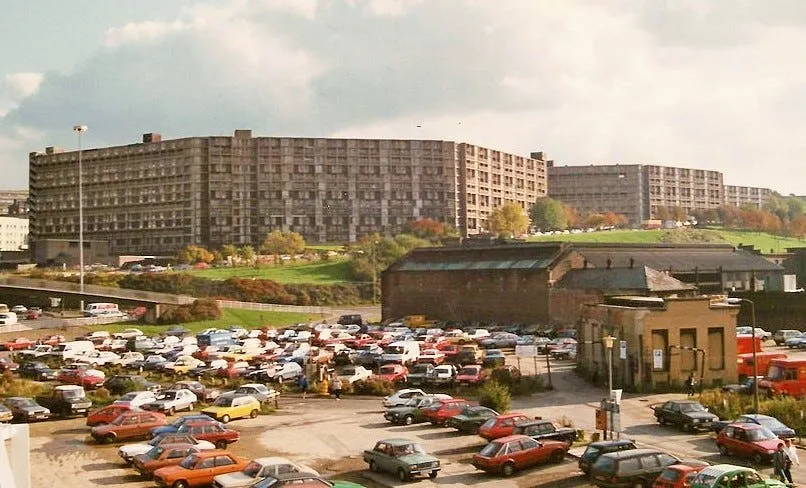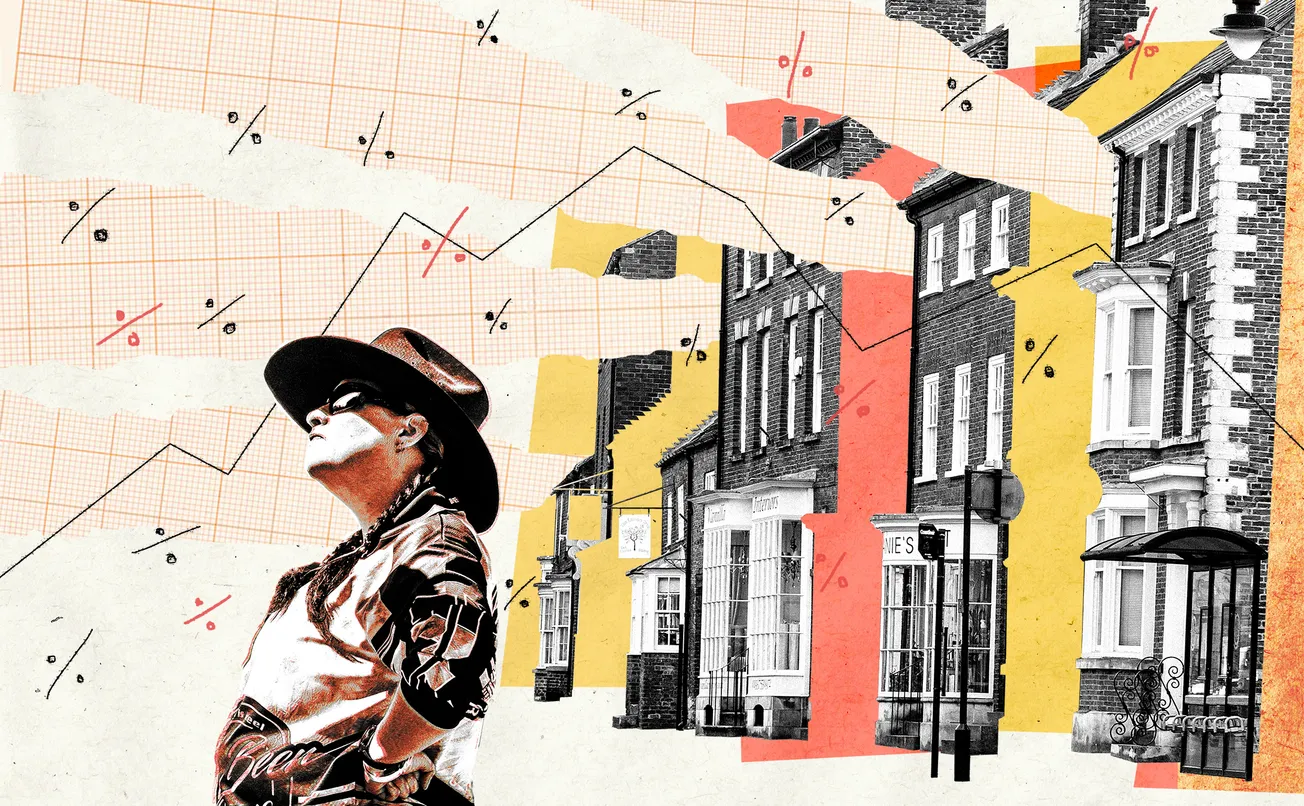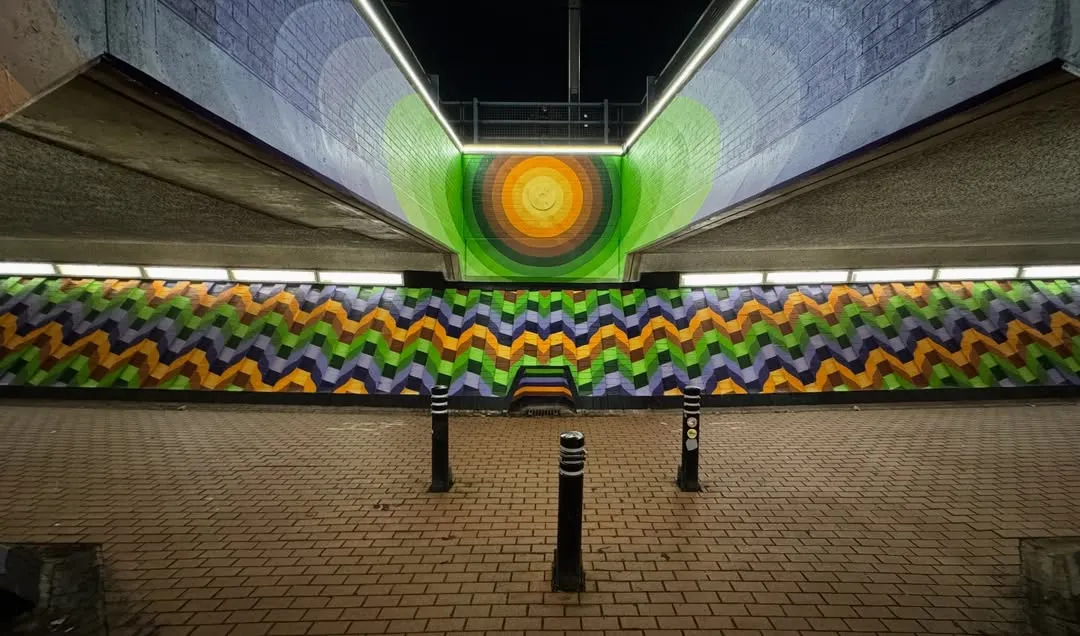Joanne Marsden has lived almost her entire life at Park Hill flats. She was born in the back bedroom of her nanan’s flat at number 62 Long Henry Row in 1965, four years after the complex was opened in June 1961.
Now 55, she has grown up here, gone to school here, had a family here and currently lives here as one of only a handful of people who span Park Hill’s early years and its modern renaissance.
Her memories of the flats in the 1960s are hazy, but one of her earliest recollections is of playing on the veranda, looking out through the concrete bannisters onto Sheffield railway station far below. She thinks she must have been about two years old.

Later she remembers going to play on the live-in vicar’s piano on Norwich Row and riding her bike with friends from one end of the ‘streets in the sky’ to the other. “There was just always something to do and someone to play with,” she says. “It was like a big concrete playground.”
In those early days, Joanne says it was a community where everybody knew everybody else, where kids would play for hours on end in the complex’s enclosed central courtyards. “Your mum would shout you up for tea, you’d go and have it and then come straight back out to play,” she says.

“In the 80s it began to lose some of that but even when Urban Splash bought it people didn’t want to leave,” she says. After moving away from the flats in the 1990s, Joanne came back in 2015 after the developer’s multi-million pound renovation was complete. “As soon as I saw one it just felt like home,” she told The Tribune. “When I looked around one it felt the same as it did before.”
Joanne has a special connection to this place, and believes in its fundamental goodness like a mother does about her son. “Park Hill has always been a proper community,” she says. “In other places I’ve lived, there have always been arguments and fights but here everyone has always pulled together.”

While nowadays the flats are marvelled at by architecture students and idolised by brutalism fanboys, Joanne’s story is a reminder of the human dimension to this famous public housing complex. If those who planned and built Park Hill could hear her speak, they could perhaps be forgiven a sense of pride in what they had achieved.
The idea of Park Hill was born in the immediate post-war period, when a Sheffield scarred by war set its sights on remaking the battered city anew — ‘building back better’ in today’s political lexicon. Sheffield had lost thousands of houses in the Blitz. Much of the working class housing that remained was cramped and unsanitary, a stain on the city’s reputation that its Labour council wanted to remove.

Many of the around 1,000 people who moved into Park Hill in 1961 were people who had lived in the very terraces and courts which were demolished to make way for the complex. This helped the flats foster a sense of community, with a sociologist even being employed as a consultant on the project to help recreate and foster neighbourliness and solidarity.
Old neighbours were housed next door to each other and street names were reused, while the extensive facilities on offer to the first residents made the sprawling complex feel like a self-contained village. These included an entire array of shops, four pubs and a tenants’ and residents’ association, while the wide deck access to the flats — the ‘streets in the sky’ — also allowed children and families to use the shared space in just the way they had at ground level.

“Everything indicates it was a pretty thriving community in its early years,” says author John Boughton, whose book Municipal Dreams: The Rise and Fall of Council Housing, describes both the ambition of post-war social housing projects like Park Hill and their later fall from grace. “Generally estates were built with promises but from the outset at Park Hill they made a real concerted effort to provide those facilities,” he says.
None of this was by accident. Park Hill had been planned since 1953 and had taken four years to build, being designed by Jack Lynn and Ivor Smith working under the supervision of Sheffield Council’s chief architect J. L. Womersley.
John says both the location and prominence of the complex proves just how central public housing was to the new country that was emerging in the late 1950s and early 1960s. “You walk out of the station and there it is: a visibly proud assertion of public housing,” he says. “It is making a statement about a new Sheffield. Council housing was seen as a core component of the modern city.”

Park Hill was also the centrepiece of a much broader city-wide vision of how public housing would be developed. In 10 Years of Housing in Sheffield, a book published by Sheffield Council in 1962, housing committee chair Councillor Harold Lambert described how a series of public housing projects would ‘visually integrate’ the city.
Sheffield's distinctive landscape of hills and slopes was to be brought together to produce ‘something of the fascination of an Italian hill town’, with the grandest project of them all, Park Hill, in the centre. It is a strikingly bold vision by today’s standards, and one that was only possible in a well-resourced public sector still enjoying the broad cross-party support of the so called ‘postwar consensus’.
So how did a building that functioned as a community in its 1960s and 1970s heyday become so maligned in later life? John Boughton points the finger at broader social and economic problems caused by industrial decline rather than specific design flaws at Park Hill. “In the early years you had a working community but with mass unemployment that dynamic changes,” he says. “What was a community of the relatively affluent — the employed working class — becomes a community of the poorest and most disadvantaged, with the inevitable knock-on effects that brings.”

At the same time, the then Conservative Government's Right to Buy scheme had depleted the council’s housing stock, meaning priority was given to those most in need. This demographic shift meant that what was in the 1960s aspirational housing — a ‘step up’ — by the 1980s and 1990s became perceived by many as housing of last resort.
Many critics of Park Hill and post-war public housing in general focus more on design issues. They argue that housing people in blocks was unnatural, and that the streets in the sky became magnets for crime and anti-social behaviour. Influential theorists of urban design have argued that many blocks like this created blind spots in which bad behaviour could go undetected, lacking the ‘eyes on the street’ you get in traditional city neighbourhoods. John sees this way of thinking as a form of ‘architectural determinism’.

That debate rumbles on among urbanists and architects, fought over in books and blogs. But the narrative of nightmarish decline at Park Hill is not shared by all of those who lived here. Joanne says that contrary to popular perception, even in its later years as a council estate, Park Hill’s community remained as strong as ever.
“There were lots of people like my nanan who came here in 1961 and who still loved it,” she says. “She was the only person who lived in her flat from when it was built until the end. When they were clearing everybody out she refused to go.”
John accepts that as an outsider he is equally susceptible to stereotypes that focus on the negative rather than ordinary normality. “Council estates are very widely stigmatised in the 70s and 80s in a way that did them great harm and disservice,” he says. “Media commentators and some academics were slagging them off as ‘sink estates’ with no acknowledgement of the social problems in those estates and communities.”

Like many other buildings of its era, Park Hill could have expected little more than an eventual date with the wrecking ball, but a city council still proud of what it had achieved got the building listed in 1998, with the complex eventually being bought and redeveloped by Urban Splash.
John says the listing was both ‘deserved and needed’ to preserve Park Hill’s quality and the vision it represented, but admits to mixed feelings about what has been done to the building in the last decade: calling out the ‘inverted snobbery’ of the development’s ‘fetishisation’ of concrete and describing the bright colour scheme as ‘regrettable’.

This opinion is not shared by everyone. The building’s former live-in caretaker Grenville Squires has compared the new Park Hill to a faded former starlet who has “washed her face and put on a new frock”.
Park Hill remains a masterpiece to some and a monstrosity to others, but its Grade II* listed status means it will be a fixture on the city’s skyline for generations to come. And in June this year it will celebrate its 60th birthday.
Almost everything in Sheffield has changed in the past 60 years, yet the flats remain, looming over the city centre behind the train station, a continuing testament to soaring ambition of post-war Britain.
If someone forwarded you this newsletter, click here to join our mailing list and get thoughtful Sheffield journalism in your inbox every week.
Comments
How to comment:
If you are already a member,
click here to sign in
and leave a comment.
If you aren't a member,
sign up here
to be able to leave a comment.
To add your photo, click here to create a profile on Gravatar.







